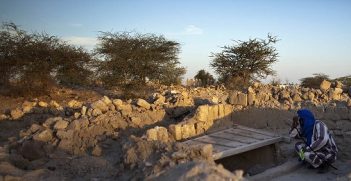Diplomacy Key to Creating an Asian Research Area

This weekend many Australians and people around the world will march in an international show of support for science. As scientific challenges increasingly require regional and global solutions, Australia needs to put science at the centre of its diplomacy and promote an Asian Research Area.
On Saturday, the March for Science will be held in Washington DC, Canberra and more than 300 other cities worldwide to promote the public importance of science and research funding. This is an important issue across the Indo-Pacific region. Solutions to many of the region’s major challenges require collaboration across national boundaries. To that end, the recent high-level summit between India and Australia placed knowledge partnerships at the top of the agenda.
But to deal with such challenges, Australia—in concert with other states—should also lead a science diplomacy initiative to develop a comprehensive framework for regional scientific cooperation: an Asian Research Area (ARA), to provide a regional public good of science collaboration. This requires a coherent diplomatic strategy alongside Australia’s public universities to bring together mobility, research infrastructure and innovation policy in a whole-of-government strategy.
Research collaboration is important for developing research excellence and driving the innovation agenda. Between 2002 and 2010 the number of collaborative research papers with foreign authors more than tripled. Collaborative publications in Asia, and particularly from China, have increased rapidly. Among these, there has been significant growth in Australia-China co-authored papers.
As the regional economy becomes more knowledge-driven, governments around the region are developing international strategies to facilitate and enhance bilateral science cooperation, including partnerships to support investment in research and development. As countries, such as China and India, invest heavily in research and innovation, this science diplomacy will—over the next decade or so—become just as important as the conventional instruments of economic diplomacy. Australia can obtain maximum benefit by placing science at the core of diplomatic initiatives, including those through an ARA.
In Australia, public universities and governments have attempted to enhance research collaboration with the Indo-Pacific region through such targeted programs as the Australia-India Strategic Research Fund. Leading research-intensive universities have made substantial investments in research collaboration with China.
The difficulty with these initiatives is that they are driven by bilateral agreements or by initiatives of individual institutions. Embedding them in a broader diplomatic framework would encourage and consolidate these initiatives. For example, individual university collaborations would be greatly enhanced through a mobility program that allowed researchers to move easily between countries.
The development of regional cooperation for scientific research and mobility for scientists would constitute a regional public good, enhancing the capacity to solve problems that confront the region as a whole, such as energy, water, food and health.
Enhancing regional cooperation has the benefit of building research capacity in developing countries while giving such countries a stake in the development of collaborative research infrastructure. In addition, developing scientific cooperation in areas such as space exploration and Antarctic research would serve as a counterweight to the disturbing militarisation of research in these fields.
The proposed ARA would be comparable to the European Research Area and particularly facilitate the movement of early career academics and postdoctoral researchers. Small steps need to be taken to develop such a mobility scheme. This can include expanding the New Colombo Plan, which is now focused on sending Australian students to Asia. This is laudable, but we also need more substantive levels of engagement with research training, partnership, and collaboration within the region. Indeed, this was something that the old International Development Program used to promote long before so-called Asian engagement policies became the play-things of technocratic policymakers and managers of Australian higher education.
It would mean encouraging joint PhD and postdoctoral programs across the region, particularly with countries such as Indonesia and Malaysia as they expand their higher education programs. It would require creating real—not symbolic—incentives for Australian higher education institutions to participate in such programs.
A further initiative could weave a multilateral agreement between the research funding agencies of Singapore, Hong Kong, Korea, China, Japan, India and Australia. There is much to be gained by involving the Australian Research Council in such science diplomacy initiatives.
We should not underestimate the difficulties of instituting an ARA. The nationalistic and militaristic bias towards national research policies in the region poses challenges for such initiatives. This is nonetheless outweighed by the clear public good benefits.
As scientists rally around the world, we need to place science at the heart of Australia’s regional diplomacy.
Kanishka Jayasuriya is professor of politics and international studies and a fellow of the Asia Research Centre at Murdoch University.
This article is adapted from a longer submission to the Department of Foreign Affairs and Trade’s foreign policy white paper process. It is published under a Creative Commons Licence and may be republished with attribution.




